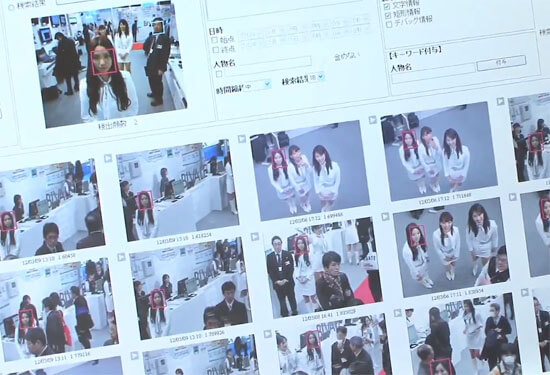New Surveillance System Identifies Your Face By Searching Through 36 Million Images Per Second

Share
Privacy advocates, brace yourselves - the search capabilities of the latest surveillance technology is nightmare fuel. Hitachi Kokusai Electric recently demonstrated the development of a surveillance camera system capable of searching through 36 million images per second to match a person's face taken from a mobile phone or captured by surveillance. While the minimum resolution required for a match is 40 x 40 pixels, the facial recognition software allows a variance in the position of the person's head, such that someone can be turned away from the camera horizontally or vertically by 30 degrees and it can still make a match. Furthermore, the software identifies faces in surveillance video as it is recorded, meaning that users can immediately watch before and after recorded footage from the timepoint.
This means that the biggest barrier in video surveillance, which is watching hours of video to find what you want, is gone.
The power of the search capabilities is in the algorithms that group similar faces together. When a search is conducted, results are immediately shown as thumbnails, and selecting a thumbnail pulls up the stored footage for review. Because the search results are displayed as a grid, mistaken identifications can be ruled out quickly or verified by pulling up the entire video for more information.
The scenarios that this system could be useful for are endless. The police, for instance, could find individuals from old surveillance video or pick them out of large crowds, whether they are suspects or people who've been kidnapped. Or if a retail customer is caught stealing something on camera, the system could pull up footage from each time the customer has been in the store to identify other thefts that went unnoticed.
The company, which specializes in video cameras for the imaging, medical, and security markets, states that the system is ideally suited for large-scale customers, such as law enforcement agencies, transportation centers, and retail centers. The system will be released in the next fiscal year presumably customized to specific customer's needs. Interested parties have to contact the company directly, which is probably wise in order to control whose hands it ends up in. And this means that soon, the only thing that's going to be anonymous anymore are the agencies and organizations using the software.
While this news should make anyone concerned about privacy shudder, it really was only a matter of time before something like this was developed. Likewise, it means that competing systems will follow until systems like this are common. So it will be up to legislators to define how the technology can be used legally as with other surveillance systems, like license-plate recognition cameras.
Be Part of the Future
Sign up to receive top stories about groundbreaking technologies and visionary thinkers from SingularityHub.


Check out the video from the security trade show so you can see for yourself just how easy it is to be Big Brother with this system:
[Media: YouTube]
[Sources: DigInfo, Digital Trends, PhysOrg]
David started writing for Singularity Hub in 2011 and served as editor-in-chief of the site from 2014 to 2017 and SU vice president of faculty, content, and curriculum from 2017 to 2019. His interests cover digital education, publishing, and media, but he'll always be a chemist at heart.
Related Articles

Hugging Face Says AI Models With Reasoning Use 30x More Energy on Average

How Scientists Are Growing Computers From Human Brain Cells—and Why They Want to Keep Doing It

Study: AI Chatbots Choose Friends Just Like Humans Do
What we’re reading

